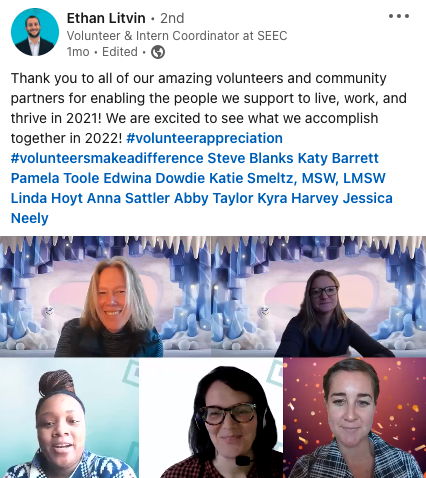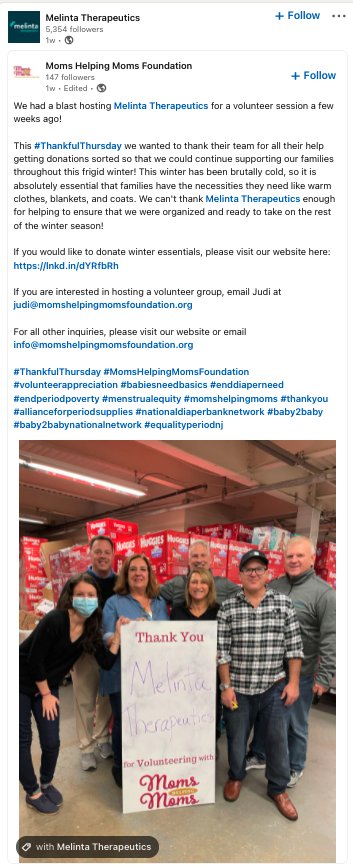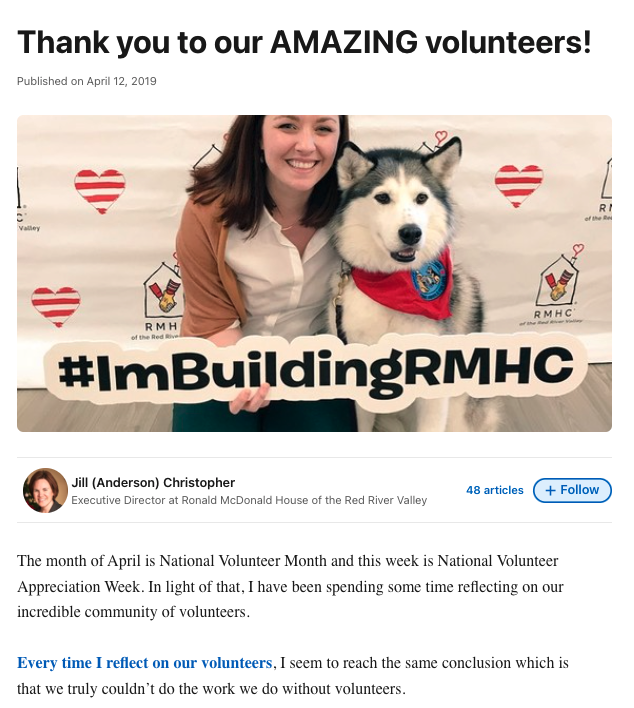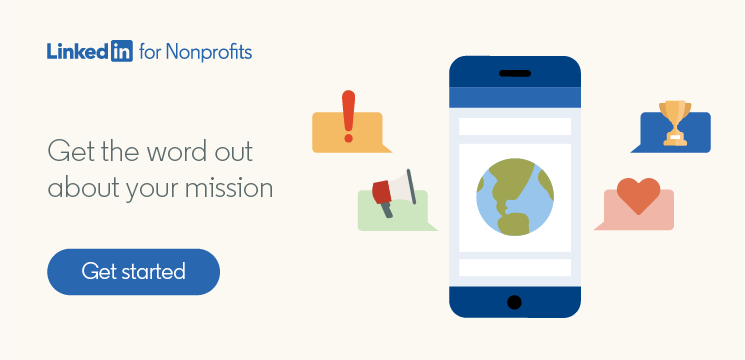
4 Examples of Great Volunteer Appreciation Posts on LinkedIn
Volunteers are critical to the nonprofit sector. You probably already thank them in person or via email, but what about on social media?
By publicly and authentically sharing your gratitude for your volunteers’ hard work, you can not only foster a greater sense of community that motivates them to continue supporting you, but encourage other people to get involved, too. To inspire you to create your own volunteer appreciation posts on the platform, here are some great examples of nonprofits showing a little love to their volunteers on LinkedIn.
Blessings of Hope posts photos of volunteers in action

Blessings of Hope is a a nonprofit food distribution center that aims to provide food for people in need. In a recent LinkedIn post, the organization shared some pictures capturing “behind the scenes moments” of volunteering, along with a brief explanation about the kinds of tasks its volunteers get up to.
Sharing photos of your volunteers in action is one of the simplest yet most effective ways to recognize their efforts. By detailing what your volunteer work involves, you can also get your audience thinking about ways they might be able to lend their skills to support your important work.
SEEC says thank-you via video

SEEC, a nonprofit agency for adults with developmental disabilities, recently got multiple members of its staff involved in creating a thank-you video for volunteers and community partners. In the video, which was posted to LinkedIn by SEEC’s Volunteer and Intern Coordinator Ethan Litvin, employees give personal shout-outs to different volunteering teams and share specific examples of ways volunteers contributed to SEEC’s mission in 2021.
Videos can be especially meaningful because they allow your nonprofit team to thank volunteers in their own words. And with modern video conferencing technology, it’s easy to bring staff together to record a thank-you video—no editing skills required.
Moms Helping Moms Foundation spotlighted a corporate partner

Corporate volunteering programs can be a powerful way for companies to give back to the community and engage their employees. Showing appreciation for volunteers who participate in these programs can help nonprofits encourage other companies to get involved. Moms Helping Moms Foundation did this in its recent LinkedIn post celebrating the employees of Melinta Therapeutics who helped organize donations that will soon go out to families in need.
This appreciation post stands out for several reasons. For one thing, it provides compelling details about the nonprofit’s mission and shares useful links and email addresses for other companies or individuals that might want to volunteer or donate supplies. It also shares an uplifting group picture and tags Melinta Therapeutics, making it more likely that the company will see the post and reshare it (which it did).
Ronald McDonald House of the Red River Valley wrote a heartfelt article

A concise LinkedIn post can mean a lot to volunteers. But if you have a lot to say, then you may want to follow in Ronald McDonald House of the Red River Valley’s footsteps and publish an article on LinkedIn instead.
Posted in 2019 during National Volunteer Appreciation Week, the article was authored by Jill Christopher, Executive Director at Ronald McDonald House of the Red River Valley, and goes into detail about the incredible work volunteers have been doing. The long-form nature of the article allows Jill to share both big-picture information and memorable anecdotes about small acts of kindness.
Make your volunteers feel seen and appreciated
Volunteers often work tirelessly behind the scenes. Bring their efforts to the forefront and let them know how appreciated they are by saying thank-you publicly and often.
We hope these examples have inspired you to share a volunteer appreciation post on LinkedIn in the near future! With many professionals interested in volunteering, your posts can help you get the attention of future volunteers—while letting your current volunteers know how much they mean to you.

